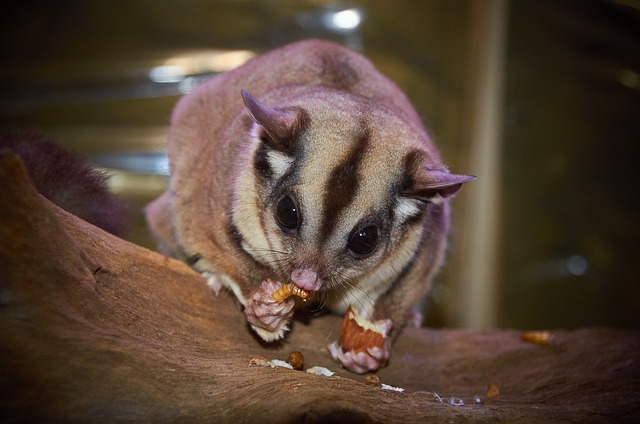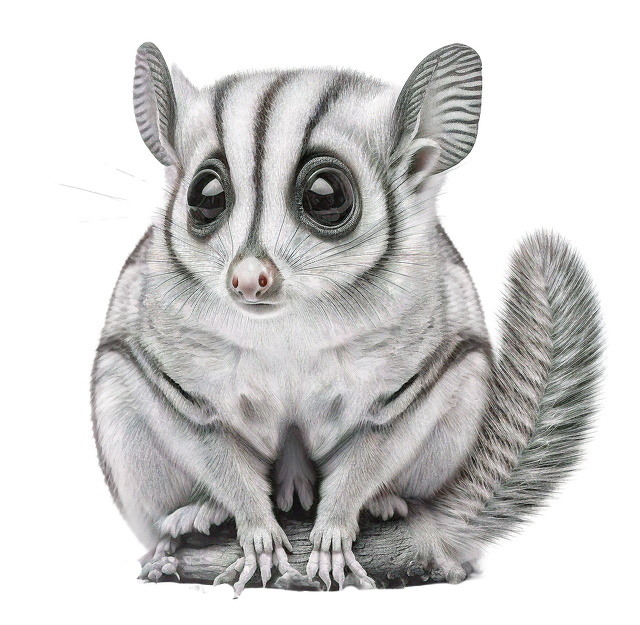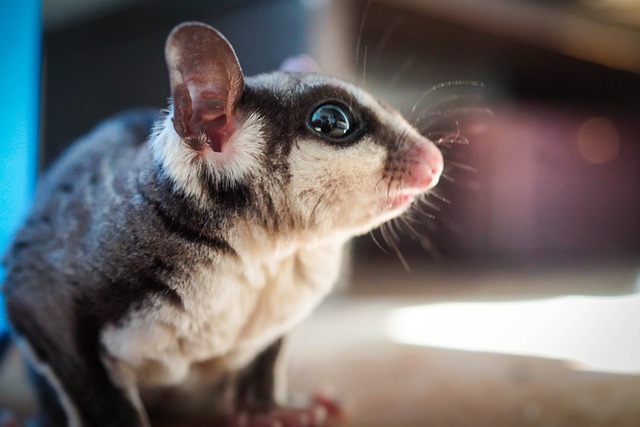How To Stop Your Sugar Glider From Peeing On You
Hey there! If you’ve recently become the proud owner of a sugar glider, you may have encountered a little issue – your furry friend keeps peeing on you. And let’s be honest, as cute and adorable as they are, it’s not the most pleasant experience. But don’t worry, in this article, we’ll share some tips and tricks on how to stop your sugar glider from peeing on you.
Curious to learn more? Well, in the next paragraph, we’ll delve deeper into the possible reasons why your sugar glider is peeing on you and provide you with practical solutions to address this behavior. Whether it’s a matter of training, understanding their needs, or creating a suitable environment, we’ve got you covered. So, if you’re tired of getting unintentionally showered by your little buddy, keep reading to find out how you can enjoy some pee-free bonding time with your sugar glider!

Understanding Sugar Gliders
Sugar gliders are small, exotic marsupials native to Australia, Indonesia, and New Guinea. They are known for their unique gliding ability, thanks to a membrane stretching from their wrists to their ankles. These adorable creatures have become popular pets due to their sociable nature and their ability to form strong bonds with their owners.
What are sugar gliders?
Sugar gliders belong to the family Petauridae, and their scientific name is Petaurus breviceps. They are called “sugar” gliders because of their affinity for sugary foods, mainly nectar and sap. In the wild, they live in treetops and glide from tree to tree using their patagium, the membrane responsible for their gliding capability.
Their behavior and habits
Sugar gliders are highly social animals that live in colonies or small family groups. They exhibit strong bonding behaviors, both with their own kind and with their human owners. They are nocturnal creatures, meaning they are most active during the night and sleep during the day. Sugar gliders communicate with each other through a combination of vocalizations and scent marking.
The bond between a sugar glider and its owner
When properly cared for and given ample attention, sugar gliders can form deep bonds with their human owners. Building a strong bond with your sugar glider requires patience, trust, and consistent interaction. Spending quality time together, handling them gently, and providing opportunities for appropriate play and exercise will help strengthen your bond with your pet.
Reasons for Urinating
Sugar gliders, like other animals, have specific reasons why they urinate. Understanding these reasons is crucial in effectively addressing and managing this behavior.
Natural instinct in the wild
In the wild, sugar gliders urinate to mark their territory and communicate with other gliders. The smell of their urine acts as a signal to other gliders, indicating that a particular area is already occupied.
Territorial marking
Even in captivity, sugar gliders may exhibit territorial marking behavior. They may urinate on certain objects, including their owners, to establish their presence. This behavior is usually more prominent in unneutered males.
Fear or stress
Sugar gliders may involuntarily urinate when they are scared, anxious, or stressed. This can occur during new or unfamiliar situations, such as when handling or introducing them to new environments.
Medical issues
In some cases, excessive urination or inappropriate urination may be a sign of an underlying medical issue, such as a urinary tract infection or bladder stones. If you notice any abnormal urination patterns, it is essential to consult a veterinarian for a proper diagnosis and treatment.

Creating a Suitable Habitat
Providing a suitable habitat for your sugar glider is crucial in preventing urination issues. Here are some key factors to consider when setting up your glider’s living space.
Proper cage setup
Ensure that the cage is appropriately sized for your sugar glider. It should provide ample space for climbing, gliding, and general activity. The cage should also be escape-proof and equipped with secure closures to prevent your pet from accidentally escaping.
Cleanliness and hygiene
Maintaining a clean environment is essential for your sugar glider’s health and well-being. Regularly clean the cage, removing any soiled bedding or droppings. This will help prevent unpleasant odors that may trigger inappropriate urination.
Providing appropriate bedding materials
Choose bedding materials that are safe, absorbent, and comfortable for your sugar glider. Avoid using pine or cedar bedding, as they can be harmful to their respiratory systems. Opt for commercial glider-safe bedding or alternatives such as shredded paper or fleece.
Enrichment activities and stimulation
Keeping your sugar glider mentally stimulated and physically active is vital in preventing stress-related urination issues. Provide a variety of toys, climbing structures, and hiding spots to cater to their natural instincts. This will help keep them engaged and emotionally healthy.
Establishing a Bond with Your Sugar Glider
Building a strong bond with your sugar glider is essential in addressing any urination issues. Here are some tips on how to establish a trusting relationship with your pet.
Building trust and mutual understanding
Allow your sugar glider to become familiar with your scent and presence by spending time near the cage regularly. Move slowly and avoid sudden movements to help them feel more at ease. Offer treats and rewards to create positive associations with your presence.
Frequent handling and socialization
Gently handle your sugar glider regularly, gradually increasing the duration and intensity of handling sessions. This will help them become accustomed to your touch and develop trust. Socialize them with other family members to ensure they are comfortable with different people.
Bonding exercises and playtime
Engage in bonding exercises and interactive play sessions with your sugar glider. Use toys and treats to encourage activity and mental stimulation. These activities will not only strengthen your bond but also provide an outlet for their energy and natural behaviors.

Recognizing Early Signs of Urination
Observing your sugar glider’s body language and behaviors can help you predict and prevent urination issues. Look out for the following signs:
Observing body language
Pay attention to any signs of restlessness or discomfort in your sugar glider. Tail flicking, grooming excessively, or posturing in a defensive manner may indicate that they need to urinate.
Noticing pre-urination behaviors
Sugar gliders often display specific behaviors before urinating, such as circling or squatting in a particular spot. By recognizing these behaviors, you can act proactively by redirecting them to an appropriate area.
Identifying common triggers
Sugar gliders may be more prone to urinate in certain situations or around specific objects. Take note of any triggers, such as sudden loud noises, strangers, or territorial objects. Avoiding or minimizing exposure to these triggers can help reduce urination issues.
Positive Reinforcement Training
Using positive reinforcement techniques can be highly effective in preventing and redirecting urination behavior. Here are some strategies to implement:
Using rewards and treats
Reward your sugar glider for exhibiting appropriate urination behavior. Offer treats and verbal praise immediately after they have urinated in the designated area or when they demonstrate signs of needing to urinate.
Implementing a consistent routine
Establish a regular routine for taking your sugar glider to their designated toileting area. By consistently providing opportunities for them to urinate in an appropriate spot, you can help reinforce this behavior.
Potty training techniques
Consider implementing potty training techniques such as using a litter box or providing absorbent pads in a specific spot within the cage. Gradually encourage your sugar glider to use these areas for urination by placing soiled bedding or urine-soaked material in these spots.
Redirecting behavior
If you catch your sugar glider urinating inappropriately, redirect them to their designated toileting area immediately. Encourage them to finish urinating in the appropriate spot and reward them accordingly.
Addressing Territorial Marking
Territorial marking can be a challenging behavior to manage in sugar gliders. However, there are strategies you can employ to minimize or redirect this behavior:
Providing designated marking areas
Create specific areas within the cage where your sugar glider is allowed to mark. Place absorbent pads or designated marking materials in these spots to encourage the desired behavior.
Using deterrents for certain surfaces
If your sugar glider has a habit of marking particular surfaces, consider using deterrents such as double-sided tape or aluminum foil. These textures can be unappealing to sugar gliders, discouraging them from marking in unwanted areas.
Cleaning marked areas
Thoroughly clean any areas that have been marked by your sugar glider. Use enzymatic cleaners specifically designed to remove pet odors. This will eliminate the smell and reduce the likelihood of your glider continuously marking those spots.
Dealing with Fear or Stress
Fear or stress can contribute to urination issues in sugar gliders. Here are some strategies to address these emotions:
Identifying sources of fear or stress
Observe your sugar glider’s environment and interactions to identify potential sources of fear or stress. This could include loud noises, sudden movements, or unfamiliar people or pets. Minimize exposure to these triggers whenever possible.
Creating a calming environment
Provide your sugar glider with a quiet and secure living space. Use soft lighting and avoid sudden loud noises or high-stress situations. Aim to create a calm and predictable environment to help reduce their anxiety levels.
Gradual desensitization techniques
If your sugar glider is fearful of certain objects or situations, employ gradual desensitization techniques. Introduce them to the feared stimulus gradually, using positive reinforcement, and gradually increase exposure until they become more comfortable.
Monitoring and Managing Health
Regularly monitoring your sugar glider’s health is crucial in ensuring their overall well-being. Here are some considerations to keep in mind:
Regular veterinary check-ups
Schedule regular veterinary check-ups for your sugar glider to detect and address any underlying health issues promptly. A thorough examination, including a check of their urinary system, can help identify and treat any medical causes of urination problems.
Dietary considerations
Provide a balanced and nutritious diet for your sugar glider. Consult with a veterinarian or exotic pet specialist to understand their dietary needs. A proper diet will help prevent nutritional deficiencies that can contribute to urinary issues.
Hydration and water availability
Ensure your sugar glider has access to fresh water at all times. Dehydration can lead to concentrated urine, which may increase the likelihood of inappropriate urination.
Identifying and treating medical issues
If you notice any changes in your sugar glider’s urination patterns, such as increased frequency, difficulty, or blood in the urine, seek immediate veterinary attention. These signs could indicate an underlying medical issue requiring proper diagnosis and treatment.
Is Peeing On Owner a Sign That My Sugar Glider Needs Potty Training?
Yes, peeing on the owner can be a sign that your sugar glider needs potty training. It’s important to potty train sugar glider to avoid messes and build a strong bond with your pet. Consistent training and positive reinforcement can help teach your sugar glider where it’s appropriate to relieve itself.
Are Peeing Issues Related to Potty Training for Sugar Gliders?
Yes, peeing issues can be related to potty training sugar gliders. As nocturnal animals, sugar gliders may not always use their designated potty area. Consistency and patience are key when potty training sugar gliders. Providing appropriate receptacles and cleaning regularly can help with peeing issues.
Conclusion
By following the right techniques, you can establish a happy and clean relationship with your sugar glider. Understanding their behavior, providing a suitable habitat, and actively training and socializing them will go a long way in preventing urination issues. Remember to be patient, consistent, and gentle in your approach. With time and effort, you can enjoy a strong bond with your sugar glider while minimizing any undesirable urination behaviors.



